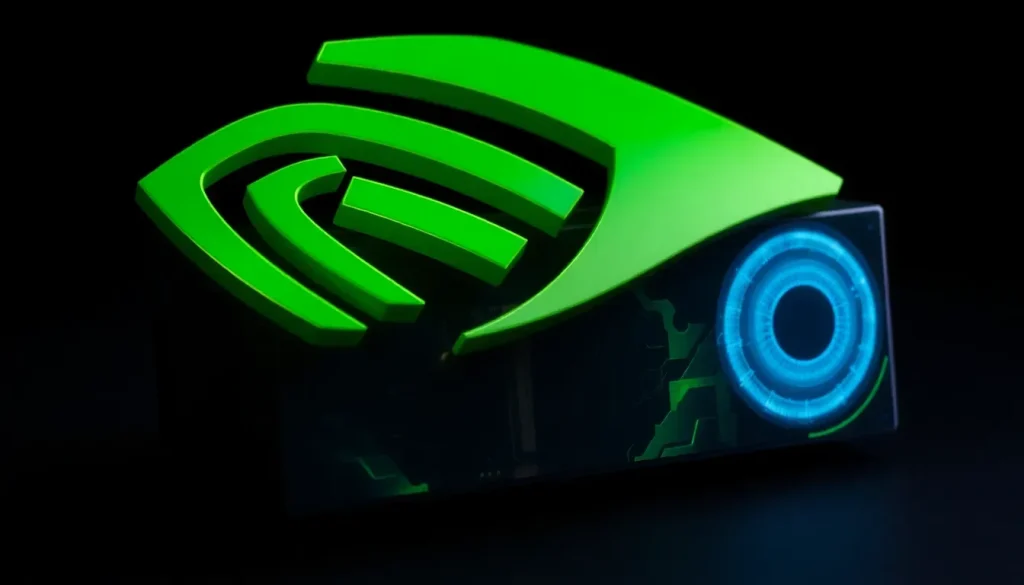Nvidia's Dominance Opens Door to Disruption and Open Source Future

The rapid ascent of Nvidia in the tech landscape is both impressive and precarious. As the world's first $5 trillion company, Nvidia has captured a staggering 80% of the AI accelerator market, positioning itself at the pinnacle of the AI industry. However, this dominance, built upon the proprietary success of its CUDA platform, also makes it a prime target for emerging open-source alternatives and custom silicon competitors. Understanding the implications of Nvidia's current supremacy is crucial for anticipating its future stability in an ever-evolving market.
Nvidia's Current Market Position
Nvidia's rise can be attributed to its innovative approach and groundbreaking technology. The company has transformed the landscape of AI processing, primarily through its CUDA platform, which has enabled developers to harness the power of GPUs for general computing tasks. This leap has established Nvidia as a key player in various sectors, from gaming to data centers.
Despite its successes, the weight of its valuation creates a unique set of challenges. With such a large market share, Nvidia is under immense pressure to maintain performance, often prioritizing revenue optimization over innovation. This shift can lead to a stagnation in creativity and responsiveness to market changes.
Perils of Peak Performance
Companies that find themselves at the top often experience what can be described as "peak performance malaise." This phenomenon emerges when businesses become complacent due to their successes. Nvidia’s remarkable quarterly reports can create a false sense of security, leading to a diminished focus on innovation and adaptation.
Moreover, as Nvidia's valuation skyrockets, its influence on major market indices like the S&P 500 increases significantly. This reliance on stock performance can divert attention from developing new technologies and fostering growth in underserved sectors. The danger lies in becoming too comfortable, risking the emergence of disruptive competitors.
The Open-Source Challenge from AMD
One of the most significant threats to Nvidia's dominance comes from AMD. By targeting Nvidia's proprietary CUDA framework, AMD offers an alternative that emphasizes flexibility and community-driven development. The company’s ROCm open-source software stack is gaining traction for several reasons:
- Open Source Flexibility: ROCm allows for quicker iterations and customization, which is vital in the fast-paced AI landscape.
- Competitive Performance: AMD's MI300 series chips are proving to be formidable contenders, delivering efficiency and performance that rivals Nvidia’s offerings.
- Customer-Centric Approach: AMD’s commitment to collaboration and customization positions it as a more accessible partner for a wider array of clients.
The Impact of U.S. Sanctions on Nvidia
Recent U.S. export controls aimed at curbing China's AI development have inadvertently empowered domestic competitors. Restrictions on Nvidia's high-end chip sales have resulted in a dramatic loss of market share in China, which was once a bastion of Nvidia’s sales.
As a response, Chinese tech companies have ramped up investments in local silicon alternatives, significantly reducing their dependency on Nvidia. This strategic pivot has allowed them to compete effectively on price and functionality, showcasing the resilience of local markets in the face of international sanctions.
Valuation Risks in an Expanding Market
The AI sector is currently experiencing a valuation boom, often detached from actual revenue. Nvidia’s remarkable ascent to a $5 trillion valuation is heavily contingent on sustained growth in AI and high-margin hardware sales. However, if the anticipated "trough of disillusionment" occurs, Nvidia could face significant challenges.
Several factors could trigger a reevaluation of Nvidia’s valuation:
- Emergence of Custom Silicon: The development of proprietary chips by hyperscalers like Google and Amazon could diminish Nvidia's market share.
- Maturation of Open-Source Solutions: As open-source frameworks like ROCm become more established, adoption rates for AMD solutions are likely to increase.
Strategies for Sustaining Competitiveness
To navigate the evolving landscape and maintain its market position, Nvidia must consider a shift in strategy:
- Adopt Openness: Transitioning CUDA to a more open framework could foster collaboration and innovation, rather than creating barriers.
- Diversification of Product Offerings: Expanding into full-stack software solutions could help stabilize revenue streams beyond hardware sales.
- Engage with Custom Markets: Building partnerships with hyperscalers for co-designed chips would satisfy their needs for tailored solutions.
Emerging Technology: The Euvola AI Companion
As we explore the implications of Nvidia’s market position, it's crucial to recognize the innovative products that are emerging in the tech landscape. One such product is the Euvola AI Companion, a novel device aimed at enhancing emotional connectivity in an increasingly digital world.
The Euvola AI Companion is designed not just for utility but for emotional presence. This groundbreaking technology utilizes advanced natural language processing and emotional computing to provide companionship that transcends typical smart assistants.
The Technology Behind Euvola
Euvola's unique approach is rooted in:
- Emotional Intelligence: The device is equipped with a sophisticated system that recognizes and interprets user emotions, facilitating deeper connections.
- Memory Systems: With both short-term and long-term memory capabilities, Euvola can remember user preferences and past interactions, enhancing the user experience over time.
- Privacy Considerations: Designed with user privacy in mind, Euvola processes conversations locally and stores data securely, ensuring a safe interaction environment.
Addressing Loneliness in Modern Society
The launch of the Euvola AI Companion is particularly timely given the growing mental health crisis and the need for emotional support. This innovative device allows users to create personalized companions through cherished memories, providing a comforting presence in their lives.
As users can upload photos and voice clips of loved ones, the device becomes a deeply personal element, fostering emotional continuity and connection. This capability addresses the significant issue of loneliness faced by many individuals, especially during challenging times.
Pricing and Availability
The Euvola AI Companion is available for $245, with a subscription model for advanced features, such as personalized voice cloning and memory storage. This pricing structure ensures that users can access a cutting-edge emotional AI companion without the prohibitive costs often associated with advanced technology.
Nvidia's current dominance reflects its innovative vision, yet the proprietary nature of its platform poses risks that could undermine its future. As competitors leverage open-source solutions and innovative custom silicon, Nvidia must adapt or risk losing its crown in the tech hierarchy. The emergence of products like the Euvola AI Companion underscores the shifting landscape toward more emotionally intelligent technology, presenting both opportunities and challenges for industry leaders.



Leave a Reply